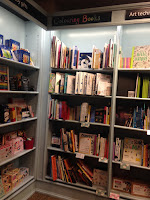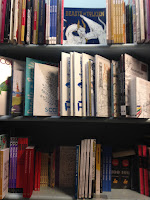UK Greetings
Create your own range of greeting cards and gift dressings.
The Brief
Imagine nipping out to the high-street, or a cool little local shop, or even the place you buy your food, and seeing your designs on display.
UK Greetings is the UK's leading direct-to-retailer publisher, making innovative, beautiful, cutting edge and classic greeting cards and gift dressings.
We want you to develop your own collection of greeting cards and gift dressings.
Initial Ideas:
Gifting seasons:
Christmas
Target Audience: Everyone
Birthdays
Target Audience: Different for different age ranges and genders
General
Target Audience: A generic aesthetically pleasing pattern that could be used for anyone and any occasion
Research into Clintons, Paperchase, OhhDeer etc.
2.
Adobe
The Challenge
Dig deep into your hard-won wisdom and life lessons, and celebrate them through illustration or photography. Identify the advice you'd like to give, and create a series of 3 posters or prints to visually bring your insights to life.
Can you communicate wisdom without words? They say a picture's worth a thousand. Create images that pack a punch and get to the core of the heartfelt advice you're trying to express. Though this is all about craft, so you can incorporate lettering if that's your illustrative style.
Initial Ideas:
- University based - work load, uni life, relationships, friendships, social aspect.
- Life lesson based - relationships, growing up, friendships.
3.
Roald Dahl
The Challenge
We invite you to illustrate a series of iconic scenes, featuring at least three iconic characters from Roald Dahl's inventive, revolting, wicked, or friendly stories in a style of your choosing. None of your illustrations should be boring, safe, or predictable. All styles welcome.
The scenes can be from any of Roald Dahl's stories for children. You'll find a list within the project pack as well as a selection of extracts for your inspiration, but you don't have to stick to these.
Initial Ideas:
- George's Marvellous Medicine - iconic scenes from that
- James and the Giant Peach - choose three ionic scenes from that
- The Twits - three iconic scenes from that
- Could choose the iconic quotes or chapters in the book and illustrate those in a different style.
4.
Royal Opera House
The Creative Challenge
We - that's the Royal Opera House and our advertising agency AKA - would like you to come up with a creative concept or idea that dispels the preconceptions and celebrates the beauty and emotion that ballet brings to the stage, something that challenges our target audience to look at ballet as an art form that could be a new love in their lives. Break down those preconceptions that have become a barrier to attendance. We'd like to you show them that ballet as an art form isn't what they think it is - and moreover that it is for them.
Initial Ideas:
5.
Quorn
The Creative Challenge
We would like you to create a campaign to promote World Meat Free Day and encourage people to go meat free for the day.
How do we explain the problem and create a solution that people across the globe can understand and get involved in to make a change. The first step in what we hope will become a longer-term behaviour change.
Think about how your campaign can encourage people to make long-term changes to their consumer behaviour beyond World Health Day. Encourage people continue to feature meat free meals in their day-to day lives. Healthy for them and healthy for the planet!
A creative hook and execution is needed to help us do this!
Think about which channels you will use to execute your campaign. Will you create an animation to share on social media? Or perhaps some posters to be used within the supermarkets.
Initial Ideas:
Research into Quorn and their beliefs. Research scaremongering like Peta. Facts, statistics, infographics. Social media. Viral video. Advertisements. Posters. Handouts. Stickers. Interactive things to appeal to all age ranges and target audiences.




















